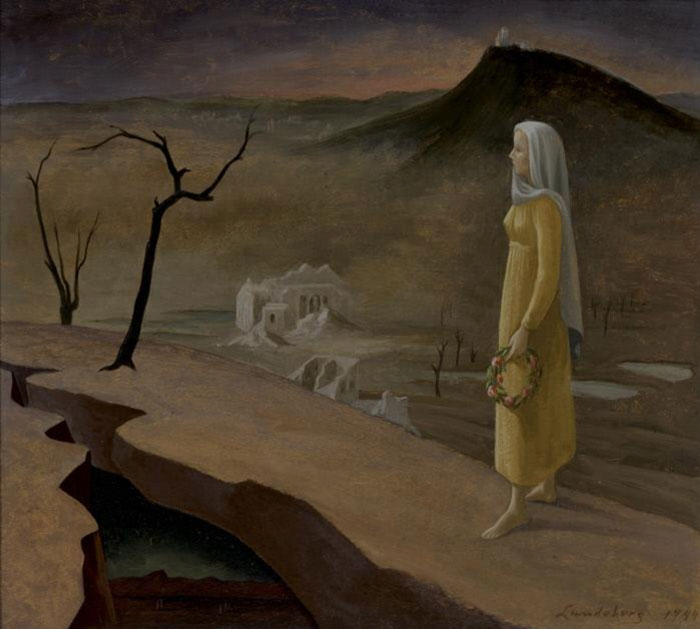Teach This Poem, though developed with a classroom in mind, can be easily adapted for remote-learning, hybrid-learning models, or in-person classes. Please see our suggestions for how to adapt this lesson for remote or blended learning. We have also noted suggestions when applicable and will continue to add to these suggestions online.
The following activities and questions are designed to help your students use their noticing skills to move through the poem and develop their thinking about its meaning with confidence, using what they’ve noticed as evidence for their interpretations. Read more about the framework upon which these activities are based.
-
Warm-up: Draw a picture of what “the underworld” might look like. Share your drawing with a partner and discuss what artistic choices you made and why.
-
Before Reading the Poem: Look closely at the picture of the painting, “Persephone Returns,” by Helen Lundeburg. What do you notice? Look closely. What else do you see?
- Reading the Poem: Read the poem “Persephone, Falling,” by Rita Dove silently. What do you notice about the poem? Annotate for any words or phrases that stand out to you or any questions you might have.
-
Listening to the Poem (enlist two volunteers to read the poem aloud): Listen as the poem is read aloud twice, and write down any additional words and phrases that stand out to you.
-
Small-group Discussion: Share what you noticed in the poem with a small group of students. Based on the details you just shared with your small group and the resources from the beginning of class, what happens to Persephone in the first stanza? Why?
-
Whole-class Discussion: What do you make of the lines from the poem in parentheses? Who might be speaking these lines and to whom? Why is this important?
-
Extension for Grades 7-8: What do you imagine happening to Persephone once “the pit opens?” Write the next part of the poem. Share your poem with the class.
-
Extension for Grades 9-12: Continue learning about Persephone and her mother Demeter by reading “The Pomegranate” by Eavan Boland, “Narcissus” by Patricia Hooper, and “Bistro Styx” by Rita Dove. Why do you think that this myth endures? Rewrite your own version of this myth or create your own original myth.
“The disappearance and the return of Persephone were also the themes of the great Eleusinian Mysteries, which promised the initiates a more perfect life after death. Therefore, this myth and its relevant mysteries explained the change of the seasons of nature and the eternal cycle of death and rebirth.” Read the myth of Persephone and Hades.
This week’s poetic term is imagery, or language in a poem representing a sensory experience. Read more

